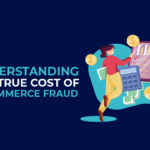Banking institutes work overtime to investigate unauthorized transactions and prevent fraud, and they’ve certainly got their work cut out for them. Particularly now, in the age of digital banking, fraud comes in many shapes and sizes.
To help you better understand unauthorized charges and fraudulent transactions, this post will explore how banks go about investigating these types of nefarious activities.
The Fraud Investigation Process
Do banks really investigate disputes?
Yes, they do. Here are the typical steps banks follow during a fraud investigation:
Investigation request
Some fraud investigations are triggered by a bank’s automated systems, while others are instigated by a customer inquiry. Whichever the case, the commencement of an investigatory process begins with the lodgment of an investigation request.
Evaluation process
The nuts and bolts of bank fraud investigations involve the bank evaluating the evidence and transactional history recorded on their systems. Banks will scour through transactional factors like geolocation, timestamps, device IP addresses, and credit card or account history.
Verdict
Once an investigation has concluded, the customer will be contacted by the bank and provided with a summary of the investigation. If nefarious activity was detected and unauthorized transactions were carried out, the customer will be refunded the amount missing from their account in full.
In the event that something more sinister has been carried out, such as identity theft, banks will hand over the information to the authorities, and the police will carry out their own investigation.
How Long Do Bank Fraud Investigations Take?
By law, most banking institutes are held to a 10 business day deadline. Within this period, a formal investigation must be conducted to determine whether or not fraudulent activity has been carried out.
Usually, investigations are concluded within this time frame.
If, for whatever reason, an institute needs longer than 10 days to carry out a bank fraud investigation, the bank will temporarily refund the customer’s account with provisional credit.
Refunding Credit Card Fraud vs. Debit Card Fraud
As most credit card issuers offer a zero-fraud liability, the refund process for credit card fraud is fairly simple. If someone gets hold of a credit card number and makes an unauthorized transaction, your chances of getting a refund are very high.
On the other hand, debit card theft investigations are a little different. Sometimes, a debit card or atm fraud investigation process won’t result in a customer receiving a refund, as many banking institutes don’t offer the same level of protection that they offer credit card holders.
Can Fraud Be Prevented?
With many transactions being processed through a business account, fraud isn’t always the easiest thing to keep on top of. Thankfully, with the help of a fraud prevention tool like FUGU, avoiding fraud has never been easier.
FUGU prevents fraudulent transactions by detecting inconsistencies in your online banking and also employs various safeguard strategies that both protect your business accounts and its bottom line.
With FUGU, the threat of unauthorized transactions or fraudulent activities is drastically reduced.




